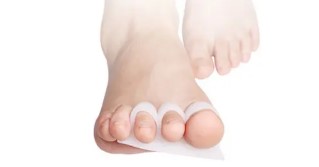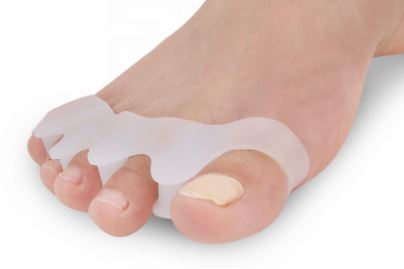Pain in the big toe that hurts when walking is most commonly due to osteoarthritis, a condition commonly known as hallux rigidus (if the joint is really stiff) or hallux limitus (if its not so stiff). If its really painful at rest, then it might more likely be gout than hallux rigidus. With the hallux rigidus, when we are walking and the heel starts to come off the ground, the big toe joint needs to move. If that movement is limited or there is osteoarthritis in the joint, then that is going to be painful to walk. It makes sense that if that joint hurts to walk, then a logical way to deal with it is to restrict how much the joint moves.
There are a number of ways to do this. One is felt padding that can be stuck on the foot under the big toe and ball of the foot or strapping could be used to tape the joint. Both of these are really good short term measures. If you need a foot orthotic for other reasons, there is an extension that can go on the front of the orthotic called a Morton’s extension that can be used to stiffen up the joint. Another way is to use a carbon fibre insole plate that usually are about 1-1.5mm thick and very rigid that fit inside the full length of your shoes. These carbon fibre plates are often used to treat hallux rigidus and other problems such as turf toe. The evidence is that they are pretty effective.
Another way to treat the pain from the hallux rigidus is to simply use shoes that are more rigid across the ball of the foot. The more flexible the sole of a shoe is, the more that the big toe joint is going to move and the more likely it is to be painful. The are some shoes, especially the Hoka running shoes, that have a rocker built into them. The effect of the rocker is that the big toe does not need to move as much. A pedorthist or shoe technician can add a rocker on the sole to many different types of shoes to achieve the same thing.
If you have pain in your big toe joint when you walk, come and see us and we can discuss what options may be the best for you.




